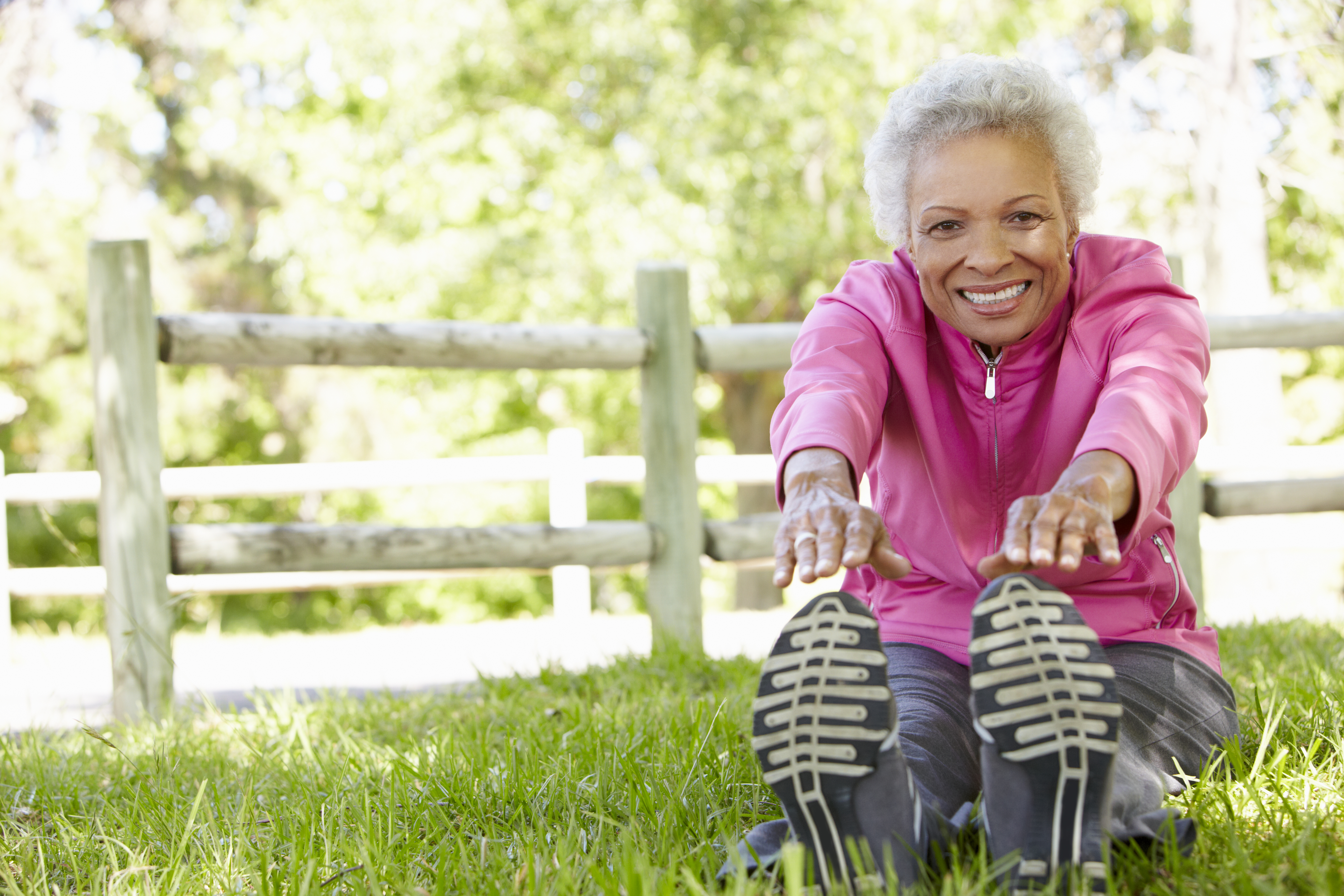Stretching: Less pain, other gains

As you get older, your toes may seem farther away. Stretching to reach them can take a lot more effort than it once did. But while it may be tempting to shrug and assume that losing flexibility is just a cost of aging, it’s nothing to take in stride. It can affect your balance and your posture. It can even make you more prone to chronic pain.
For example, tight hamstrings behind your knees can cause a pelvic misalignment that makes your lower back hurt. A lack of flexibility might also make you more prone to injury.
“In general, a lot of us have bad posture and poor range of motion,” says Dr. Lauren Elson, an instructor in physical medicine and rehabilitation at Harvard Medical School.
How can you improve flexibility?
The solution? Whether you’re an avid exerciser or spend most of your time sitting in front of a computer, stretching should be part of your weekly routine. While this may conjure images of complicated twists and contortions, the type of stretching you need may be as simple as taking periodic work breaks to lift your arms above your head and to perform some other easy movements.
“Stretching doesn’t have to be a particular program. It’s just getting out of the posture you spend a lot of time in, taking some deep breaths, and moving your joints through their full range,” says Dr. Elson.
Try the three main types of stretches described below to help improve flexibility. All are easy to incorporate into your day or week.
Stretches to combat a lack of movement
If you sit at a desk all day, you may be doing your posture a disservice. Many sedentary days can lead to neck and shoulder problems and tight muscles in the hips.
“Get out of your chair and move around for a few minutes every hour,” says Dr. Elson. Focus on stretches that move the neck, shoulders, and hips, in particular. Even simple movements — such as putting your arms above your head or squeezing your shoulders back while sitting at your desk — are helpful.
Also, pay attention to other potential trouble spots. For example, many women wear high heels every day, which can reduce the flexibility of their calves. Stretching the calves daily can help ensure that this does not become a problem.
Dynamic stretches before you exercise
In the past, experts recommended that people stretch thoroughly before exercise to limber up their joints. But this is no longer the case. Research has found that holding stretches for 30 seconds or more can actually reduce the power in your muscles, hindering your performance in the workout that follows.
Instead, try what experts refer to as dynamic stretches. These are movements that will warm you up without sapping your muscle strength. Dynamic stretches are simple movements that put your muscles and joints through a normal range of motion. Examples include rolling your shoulders, circling your arms up and around, or doing lunges from side to side. If you’re going to be running or playing tennis, you might want to focus on dynamic stretches that use movements similar to those you will be performing during your workout.
Static stretches after you exercise
“The best time to stretch for lengthening, for example if you’re trying to increase hamstring flexibility, is after a workout,” says Dr. Elson. This is the time to try your static stretches — those that hold your body in various stretching positions for a few seconds or more. Stretches should be held without bouncing, because bouncing can lead to injuries.
Choose the right level of challenge
How you stretch depends a lot on your basic level of mobility. Stretches can be done at varying degrees of intensity based on your fitness level. There are easier and more challenging versions of various stretches. Select the one that is appropriate for you.
Take cues from your body to determine the right level of challenge. When you stretch, you should feel the sensation in your muscle and not at the joint. “You shouldn’t feel joint pain when stretching. Rather, it should feel like lengthening of the muscle,” says Dr. Elson.

Nenhum comentário